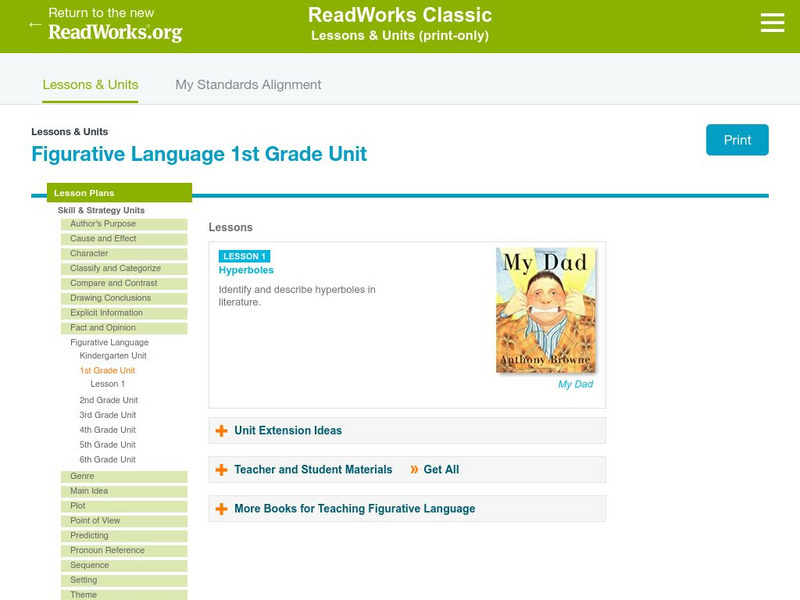South Carolina Educational Television
Know It All: Using Figurative Language to Shape Meaning and Style
The learners will be able to identify different types of figurative language in a story and explain how the author uses figurative language to shape the meaning and style of the story.
Texas Education Agency
Texas Gateway: Imagery and Figurative Language (English 7 Reading)
This lesson, focuses on three ways to use figurative language: to create imagery, to appeal to the senses (using sensory detail), and to suggest mood.
Texas Education Agency
Texas Gateway: Imagery and Figurative Language (Grade 8)
In this lesson, students learn how to make complex inferences and use textual evidence such as imagery and figurative language to support understanding.
PBS
Pbs Learning Media: Literary Elements and Techniques: Figurative Language
Discover how authors use figurative language to enhance their writing and explore the differences between similes and metaphors in this animated video [3:37] from WNET. Discussion questions below help students to further apply their...
Texas Education Agency
Texas Gateway: Imagery and Figurative Language
In this lesson, you will learn how to make complex inferences and use textual evidence such as imagery and figurative language to support understanding.
Read Works
Read Works: Grade 2: Three Lesson Unit: Figurative Language
[Free Registration/Login Required] A series of three lesson plans designed to teach students to identify and explain the meaning of figurative language including personification and idiom. Lessons are based on the books Once in a Blue...
Texas Education Agency
Texas Gateway: Imagery and Figurative Language (Grade 8)
Make complex inferences and use textual evidence such as imagery and figurative language to support understanding.
Other
Travis Unified School District: Figurative Language Terms in Julius Caesar [Pdf]
A one-page chart listing figurative language terms used in The Tragedy of Julius Caesar, along with definitions and examples.
Read Works
Read Works: 2nd Grade Lesson: Figurative Language
[Free Registration/Login Required] A lesson plan in which learners use the book Once in a Blue Moon by Nicola Morgan to learn to identify and interpret the meaning of figurative language in a fiction text. Lesson includes direct...
Georgia Department of Education
Ga Virtual Learning: Descriptive Writing: Similes, Metaphors, Cliches, Hyperbole
This lesson focuses on figurative language used in descriptive writing including similes, metaphors, cliches, hyperbole. It offers multiple links to websites pertaining to figurative language in descriptive and creative writing; an...
CommonLit
Common Lit: "What Love Isn't" by Yrsa Daley Ward
CommonLit.org is a wonderful resource to use in a Language Arts classroom. Each story or article is accompanied by guided reading questions, assessment questions, and discussion questions. In addition, students can click on words to see...
CommonLit
Common Lit: Languages
CommonLit.org is a wonderful resource to use in a Language Arts classroom. Each text is accompanied by guided reading questions, assessment questions, and discussion questions. In addition, students can click on words to see the...
Read Works
Read Works: Figurative Language 3rd Grade Unit
[Free Registration/Login Required] In this three-lesson plan unit, students use the book If You Hopped Like a Frog by David Schwartz and some additional short texts to learn to identify and understand the use of simile and metaphor in...
Georgia Department of Education
Ga Virtual Learning: Contemporary Literature: The Modern Poet
This is an introduction to a modern poetry unit; it features links to poetry and technology standards and a list of key terms. The essential questions for the unit focuses on the characteristics of contemporary poetry, how poets use...
CommonLit
Common Lit: "I Have a Dream" by Dr. Martin Luther King, Jr.
King delivered his "I Have a Dream" speech to over 250,000 people from the steps of the Lincoln Memorial in Washington, D.C., during the March on Washington for Jobs and Freedom on August 28, 1963. In this speech, King discusses racial...
Georgia Department of Education
Ga Virtual Learning: American Literature and Composition: Rationalism: Rhetoric
This lesson focuses on Rhetoric and the literary techniques used in American Revolutionary speeches and writings. Students are asked to determine the rhetorical devices used in quotes from "The Crisis No 1" by Thomas Paine and Patrick...
Alabama Learning Exchange
Alex: Figurative Language
This lesson used a slideshow presentation to explain the difference between similes and metaphors. Students are challenged to identify these figurative elements in literature and then create some themselves.
ClassFlow
Class Flow: Figurative Language
[Free Registration/Login Required] This resource explores figurative language including similes, metaphors, and personification. There are many activities used to support the exploration of each type of figurative language.
Georgia Department of Education
Ga Virtual Learning: Ap Literature & Composition: Appearance vs. Reality
This is an introduction to the literary theme of appearance vs. reality using Hamlet, a tragedy by William Shakespeare. It features a list of key terms including literary devices and dramatic terms; essential questions including how the...
Better English Lessons
Learning to Use Multiword Verbs
This site has interactive quizzes for advanced English language learners that tests knowledge of multiword verb expressions such as "Acting up," and "Airing out." [Site uses British versus American English.]
Scholastic
Scholastic: Exploring Author's Language in "The River" [Pdf]
Students will learn about literary devices as used in Gary Paulsen's "The River." This guide also supplies suggestions for group activities (PDF, requires Adobe Reader.)
New Zealand Ministry of Education
Nz Ministry of Education: Playing Around With Poetry
Middle schoolers listen to and read various texts using figurative language including a ballad, poetry (Haiku, Cinquain, Limmerick) and rap music. They discuss language, meaning and ideas in a range of texts, relating their understanding...
Read Works
Readworks: Figurative Language 1st Grade Unit
[Free Registration/Login Required] In this instructional activity students learn to identify and interpret the meaning of hyperbole in a fictional text. The instructional activity uses the book My Dad by Anthony Browne. Example charts...
Broward Education Foundation
Broward Education Foundation: Using Idioms Is a Piece of Cake [Pdf]
Teaching about idioms can be great fun. Why are idioms important? Idioms are important so that students can understand what everyone is saying! Idioms are a part of the figurative language. Using the Literal language (as in saying things...


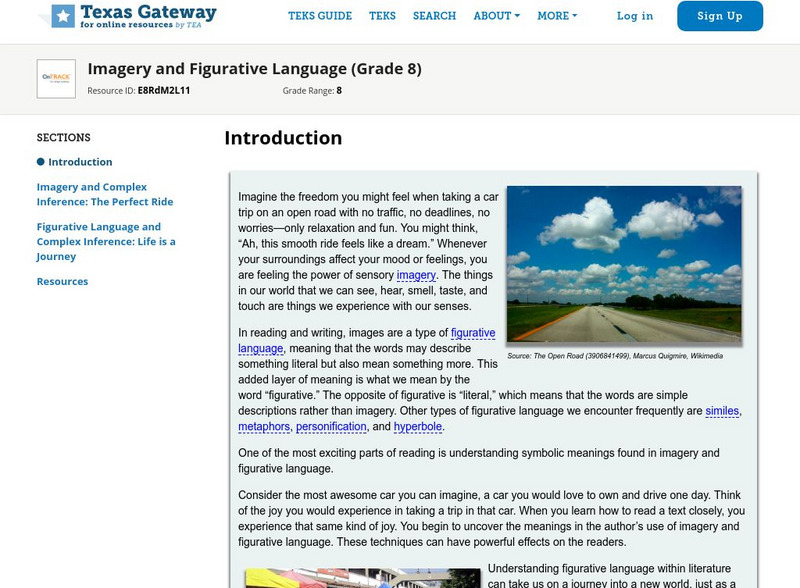
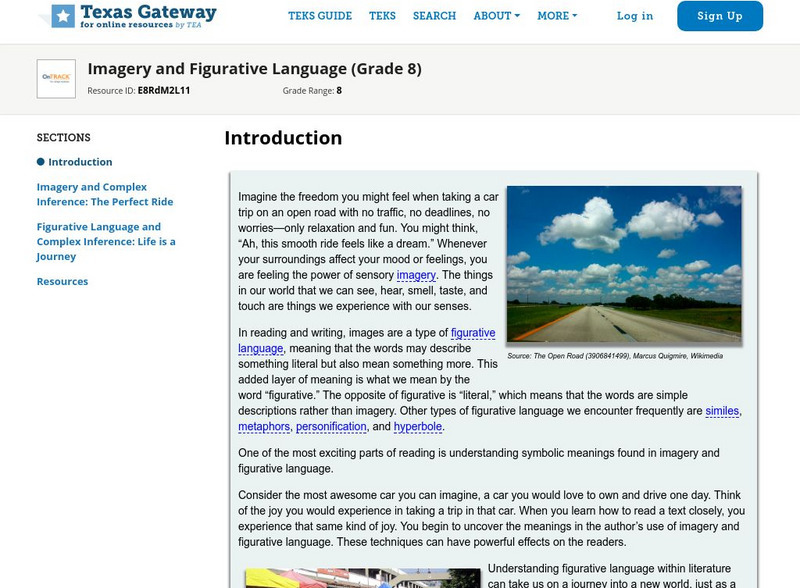
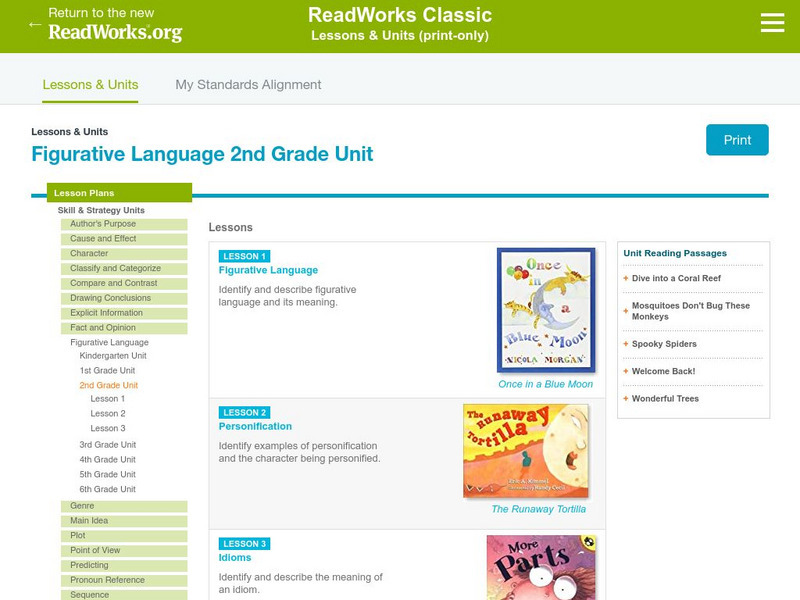
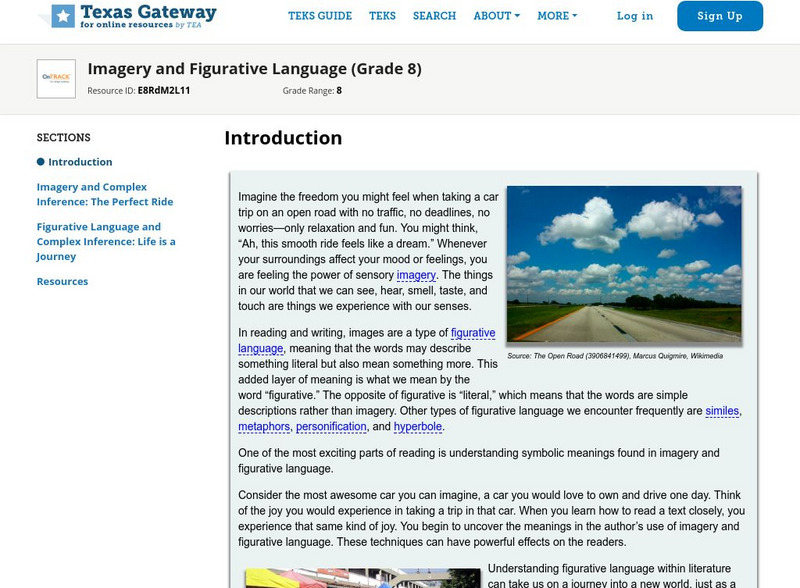
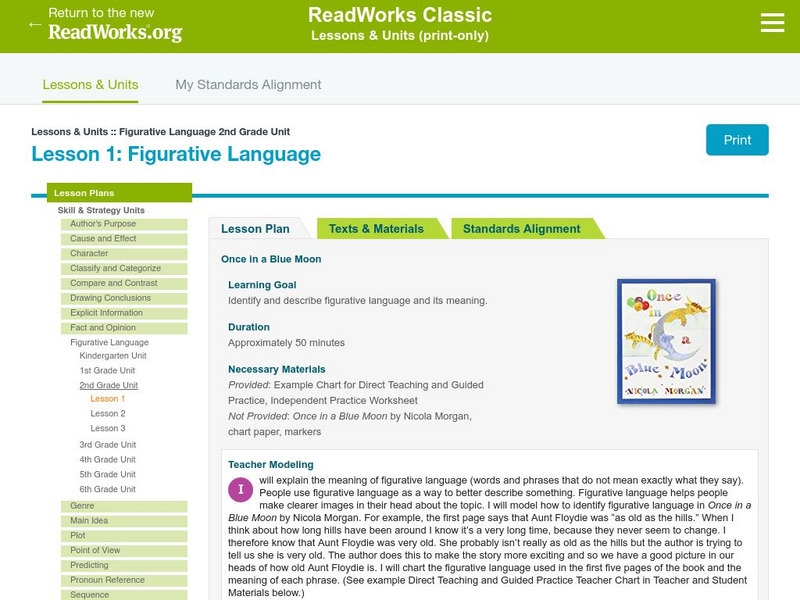
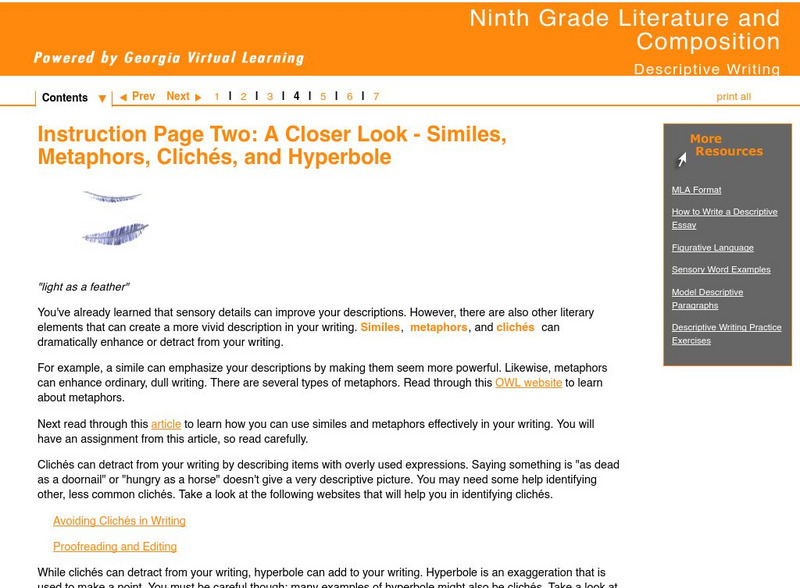
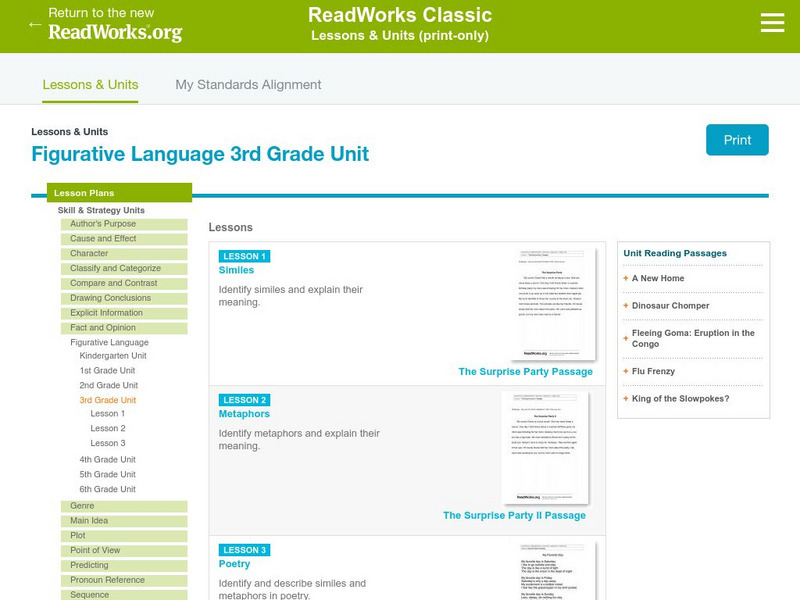

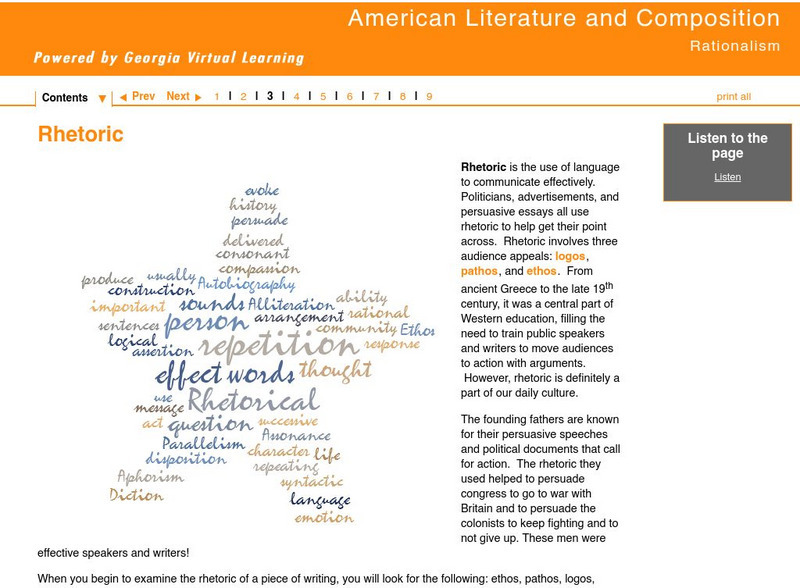


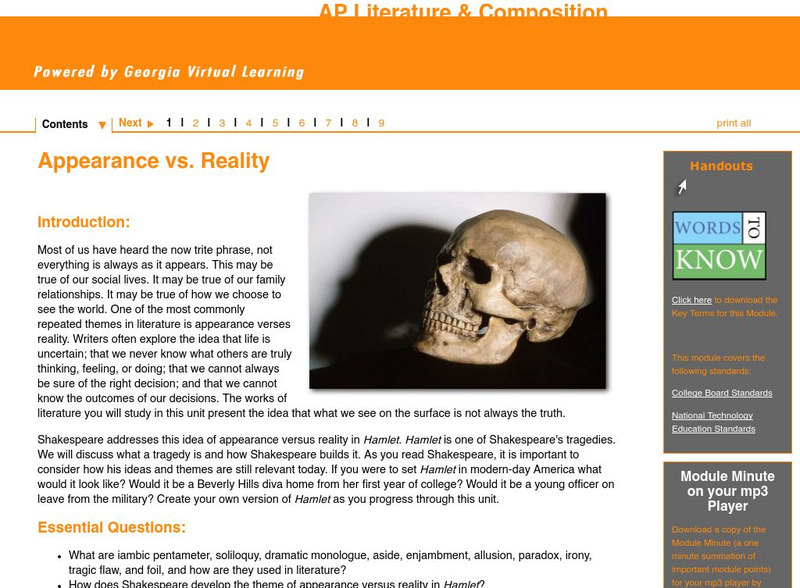

![Scholastic: Exploring Author's Language in "The River" [Pdf] Website Scholastic: Exploring Author's Language in "The River" [Pdf] Website](https://content.lessonplanet.com/knovation/original/34487-fb6f673c15b1f6a9b904e42e1affec9f.jpg?1661409227)

